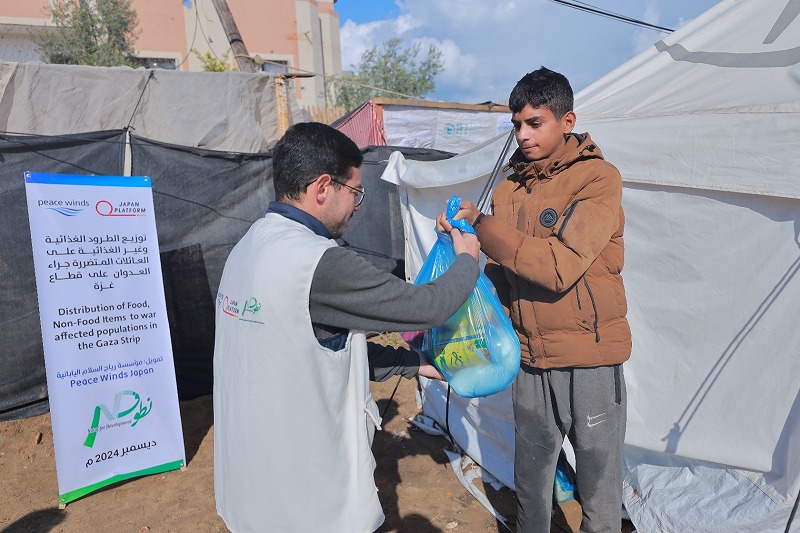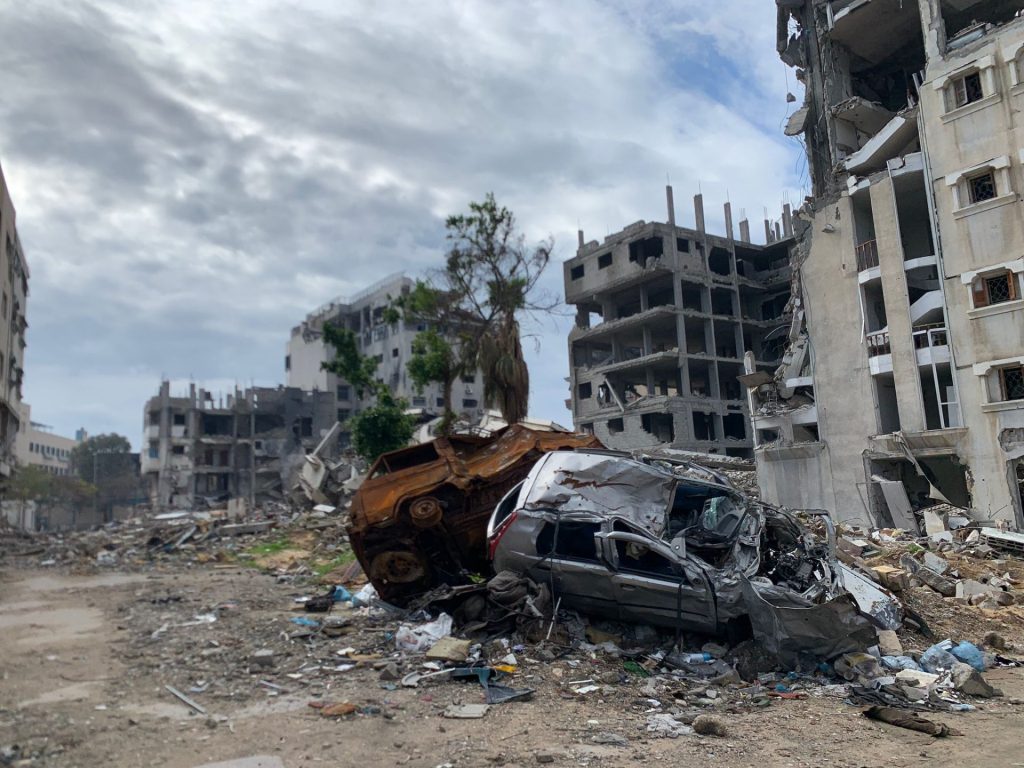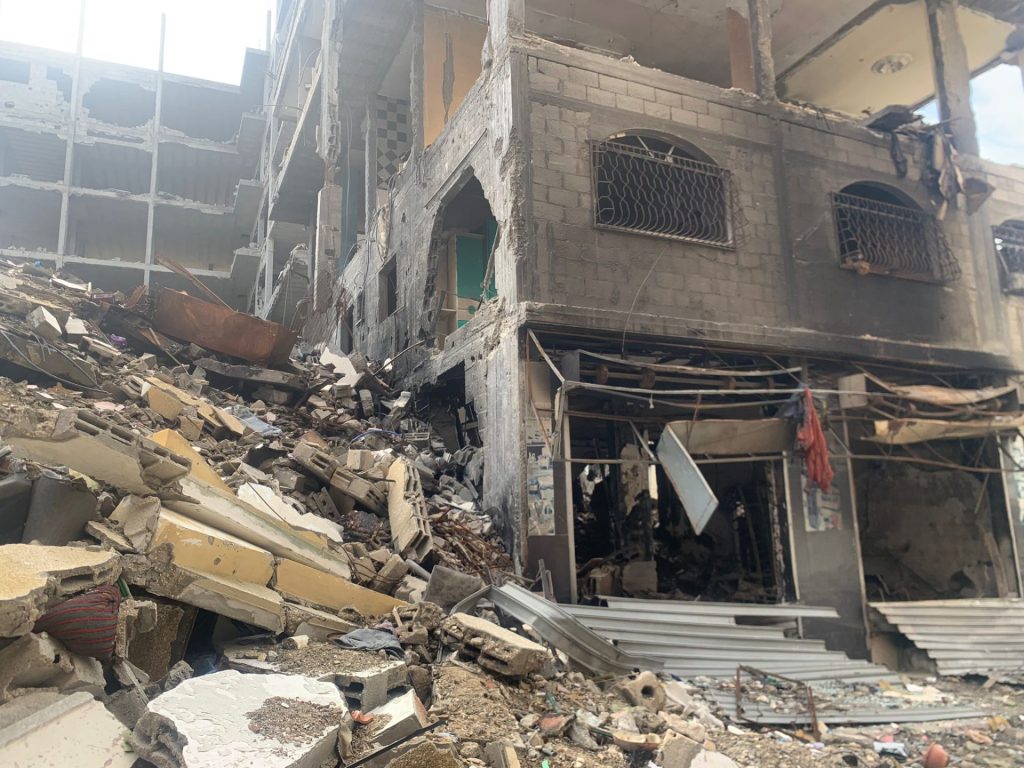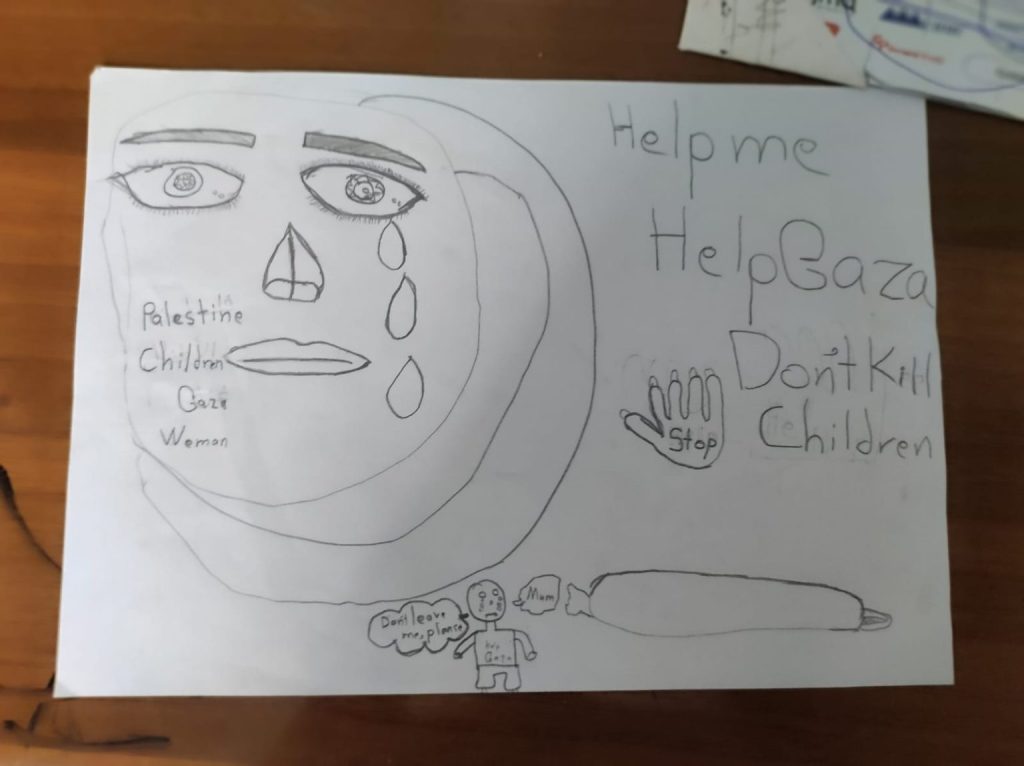Aiding Gaza’s children and families amid a seemingly endless crisis

On May 18, 2025, after two months of relative calm, the Israeli military launched a new, all-out ground operation along with an air campaign in both the north and south of Gaza. Civilian casualties continue to rise; at least 153 people were killed on that day alone, and the total number of Gaza residents killed since October 2023 now exceeds 51,000.
Over the past year and a half, Peace Winds staff inside of Gaza have been purchasing food and emergency supplies from local farmers and suppliers and redistributing them to Palestinians who have been displaced from their homes. From February through April 2025, our team distributed food packages, including vegetables, cooking oil, flour, and seasonings, as well as hygiene products like detergent and soap, to a total of 2,556 families in refugee camps in central and northern Gaza. We also purchased water from a desalination plant in Gaza City and provided clean drinking water to evacuation centers that were home to about 16,000 people.
Our Palestine Project Coordinator is working tirelessly to coordinate with Peace Winds local staff members inside of Gaza and partner organizations to provide as much aid as possible. However, this becomes more difficult each day because, still, almost no food and supplies are being allowed into Gaza. He offered his perspective on how dire the situation has become.
Since this war intensified on October 7, 2023, I have used the phrase “worst case scenario” so many times. I kept feeling like things couldn’t get any worse, but they continued to get worse so quickly, and honestly, I don’t know how else to talk about the current situation. I feel like just saying “90% of people in Gaza are suffering from starvation” or “it now exceeds 95%” isn’t enough to convey the gravity.
Even before 2023, the quality of life in Gaza was not dignified. Repeated attacks and blockades had pushed things to the limit in every aspect, from food and water to electricity and the economy. This makes the latest attacks so much worse.
On January 15, we got some hope when a six-week ceasefire agreement was reached. Although there were no large-scale operations during that time, and there was a small increase in aid, the reality is that nothing improved. There were still people going hungry, and there was no change in the quality of life for people who lost their homes.
What should concern us while [Israel and Hamas] are negotiating is that people in Gaza continue to lose their lives. Hundreds of people are dying each day, and this “emergency” situation has become their everyday reality. A UN survey reported that 70% of buildings in the Gaza strip have been destroyed. If it continues at this rate, the destruction will reach an irreversible level. The people of Gaza are being driven into a truly unprecedented crisis.
The Gaza Strip is really densely populated, with about 2.1 million people [living in an area roughly half the size of New York City]. Now, 70% of Gaza’s land is designated as “no-go zones” – areas that are so dangerous that evacuation orders have been issued, and civilians, and even UN workers, cannot enter. In other words, the people of Gaza are now being forced to live in just 30% of an already densely packed area.
The exact number of displaced after the latest invasion is still unknown. However, since the ceasefire broke down in March, at least 400,000 people were forced to flee again. Ninety percent of Gazans have lost their homes and become internally-displaced people.
Since early March, virtually all aid deliveries have been halted, putting people at extreme risk of starvation. The price of flour increased by 3,000% between the end of February and the end of April. People can only eat one and a half meals a day on average, and 92% of pregnant women and new mothers are not getting the nutrition they need. We have repeatedly warned about the risk of hunger, but if things continue as they are, the people of Gaza will be beyond hunger. They are already beginning to experience famine.
Peace Winds’ local Palestinian staff and our colleagues who work for our partner organizations are victims of the war themselves, but they are working hard to provide relief to people on the ground. In the end, the only way to save lives is to stop the violence and engage in dialogue. We hope that you will not look away from what’s happening in Gaza and join us in calling for a ceasefire and in continuing to aid the innocent children and families who are suffering so much.
Peace Winds’ support activities in Gaza are made possible by the Japan Platform as well as contributions from individual donors.




